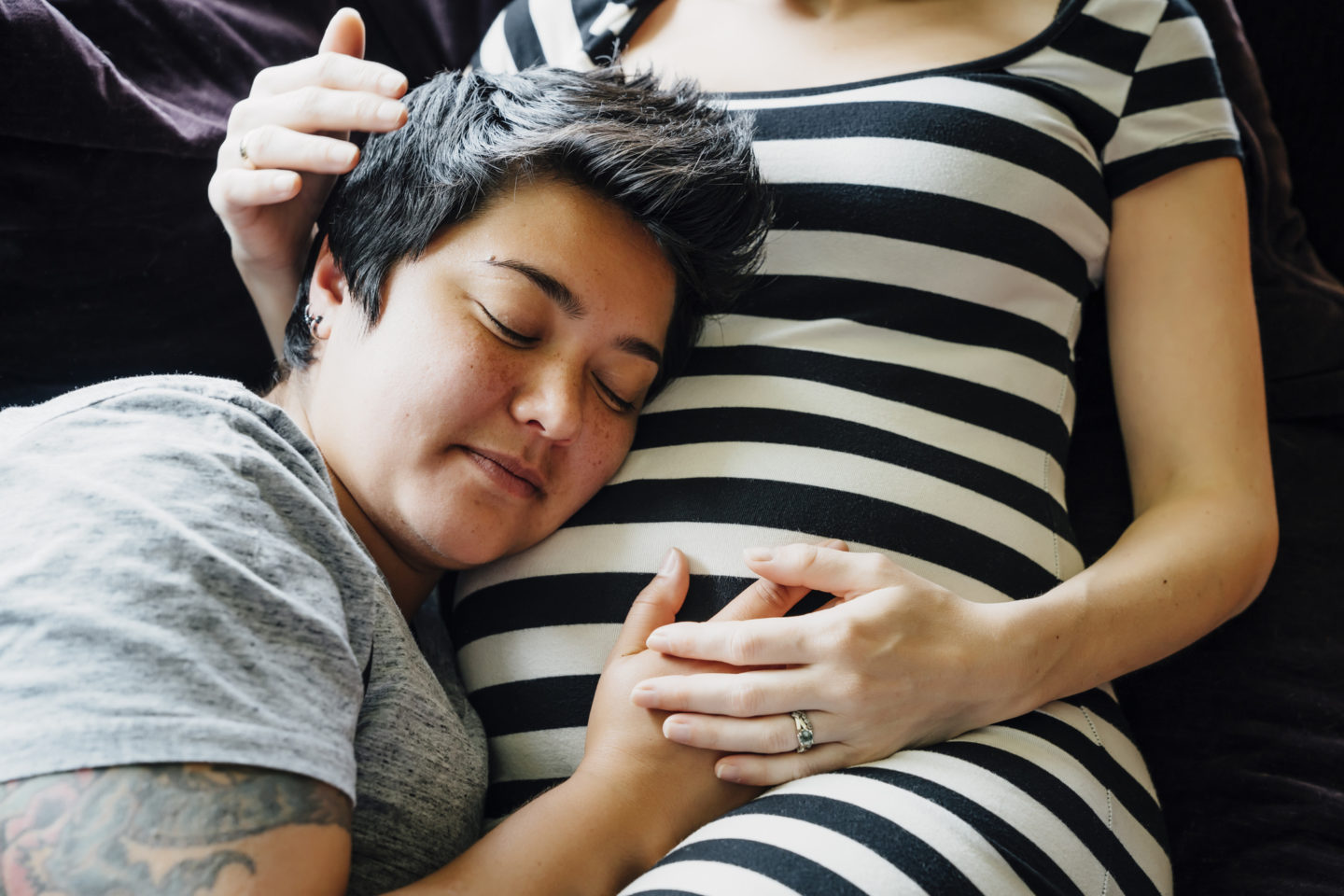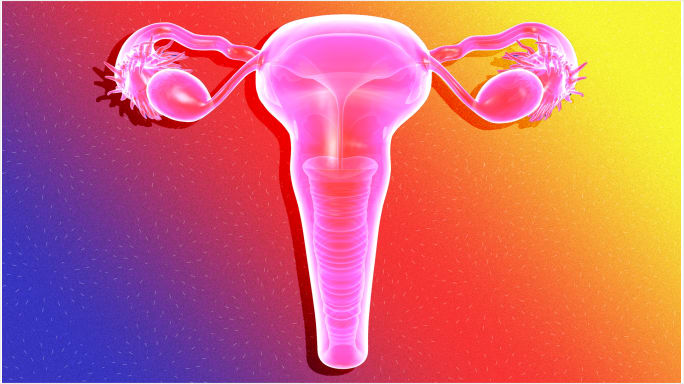More lesbian couples are choosing to have children via shared motherhood IVF.
Imagine your partner and you both have uteri and want to have a child together. The options that first come to mind are probably either adoption or in vitro fertilization (IVF), right? Both options are valid, but they aren’t always the best fit for everyone. Now imagine there was a way each partner could have a direct involvement in creation of the child? Called shared motherhood, it turns out that it already exists and that more and more lesbian couples are doing it.
According to Professor Nicholas Macklon, professor of Obstetrics and Gynecology and director of the Complete Fertility Centre at the University of Southampton, shared motherhood “involves one partner going through the IVF process to produce eggs, which are then fertilized with a donor’s sperm, before the embryo is implanted into the womb of the other…partner who carries the child.” This essentially means that one parent is the biological parent and the other is the gestational parent and creates a new way lesbian and other queer couples can experience parenthood.
Shared motherhood, also called reception of oocytes from partner, or ROPA, originated more than 20 years ago at the London Women’s Clinic, one of the United Kingdom’s top fertility clinics. It was “technically possible” as early as 1983, when the first successful pregnancy from egg donation took place, according to Joseph G. Schenker, author of the book Ethical Dilemmas in Reproductive Technologies. The delay in this technology was due to homophobic law in most countries that the time, preventing shared motherhood and other fertility treatments for queer couples.
Though progress has been made in many places around the world, there are still many places where shared motherhood is still illegal despite the many benefits it can provide to families. Professor Macklon believes the technique “comes with a number of social, emotional, and psychological benefits to both partners” because shared motherhood allows each partner to experience “motherhood.” They also both get to share a special bond with the child whether they carried the child or share DNA. It helps create the feeling that both parents are “equally related” to their child.
It isn’t surprising to see a rise in the popularity of shared motherhood. This process of achieving parenthood has “a human undertone of participation” and “collaboration,” something that has been traditionally denied to lesbian and other queer couples. A recent study has also found it to be a successful treatment with the live birth rate per receiver as high as 60 percent. The birth rate of twins was found to be at 14 percent. Shared motherhood IVF is a safe and effective treatment “with reassuring obstetric and perinatal outcomes.” It is as safe for parent and child as any IVF pregnancy can be.
The downside to shared motherhood is that it is just as expensive as any other IVF treatment and many insurance companies will deny coverage for fertility treatments. In 2017, a study found that just 26 percent of companies with 500 employees or more cover IVF. Out of pocket, one round of IVF typically costs between $12,000 and $15,000, forcing couples to save for years, borrow against 401ks, put it on credit cards, or any number of drastic measures.
The financial cost still doesn’t stop some couples from achieving their dream of having children through shared motherhood IVF. Sarah and Maggie Leigh Marshall of New York City spent nearly $100,000 to have their daughter Graham due to multiple failed IVF attempts prior to her birth. “It allowed us both to participate,” Sarah says of the experience.
Dr. Alan Copperman, medical director of the fertility clinic Reproductive Medicine Associates of New York, says, “We’re seeing more and more couples come in [wanting] to share the parenting experience.”
“The modern family is created in a way that would be humbled by traditional fertility treatments,” Dr. Copperman says. He is absolutely right. Many families decide to have a second child through shared motherhood IVF and sometimes even decide to switch roles. As a technology, it is opening up possibilities for couples that despaired they’d never be parents, and is redefining what it means to be a family.




comments